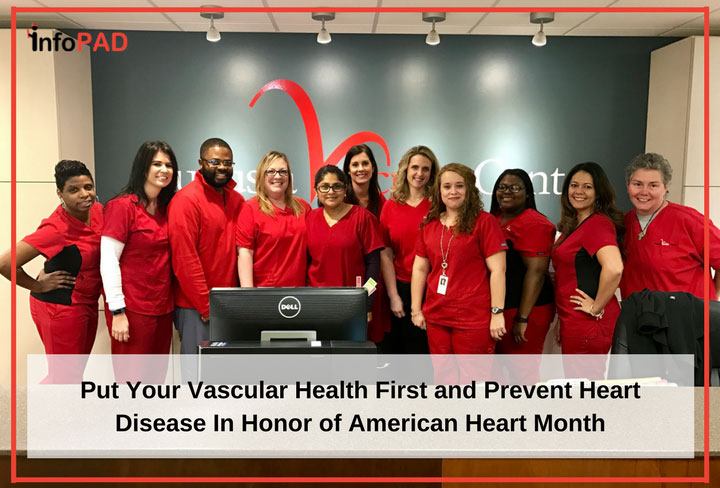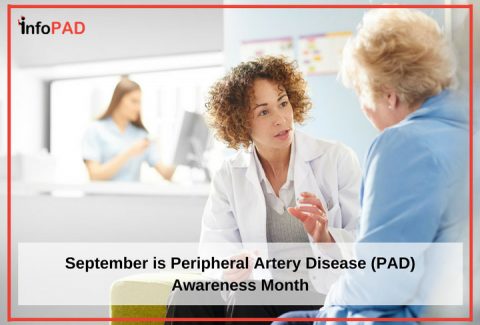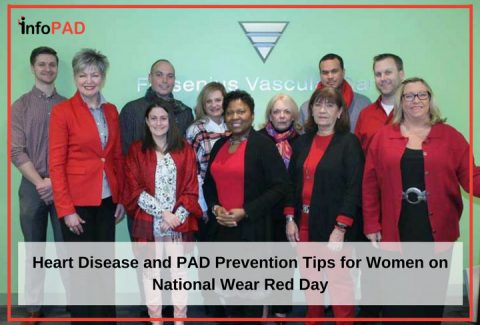
You have probably seen the shocking headlines from this past December. Alan Thicke, Carrie Fisher, and George Michael all passed away from some form of cardiac event in what felt like a rapid sequence. More shocking than their actual deaths was the fact that they were all in their 50s or 60s and died seemingly, very suddenly. While most of us probably know the risks and warning signs of heart disease, sometimes it takes learning about the untimely and devastating deaths of others to truly start the conversation about how important cardiovascular and vascular health in general, is.
This month, February, marks American Heart Month, a time where the Centers for Disease Control and Prevention (CDC) and the American Heart Association ask the public “to commit to a healthy lifestyle and make small changes that can lead to a lifetime of heart health,” [i] as well as to wear red to show support for women’s heart disease.
Heart Disease is the Top Cause of Death for Both Men and Women- And It is Preventable
What is Heart Disease?
Heart disease is the number one cause of death for both men and women. The disease especially affects African American men, who have the highest risk for heart disease. This is because 40% of them live with high blood pressure which is the leading, preventable, cause of heart disease. [ii]
Heart disease and stroke kill approximately one woman every 80 seconds, yet 80% of cardiac and stroke events can be prevented with a combination of education and action.[iii] Action can come in the form of educating yourself and your loved ones, making healthy lifestyle changes, or even speaking with a healthcare professional about heart disease risk factors, prevention, and other conditions that raise the risk for heart disease.
Even if you have heard them before, reiterating and understanding the risk factors can help prevent heart disease from developing and lower the mortality rate.
Risk Factors for Heart Disease: [iv]
- Chronic Conditions: Diabetes, High Blood Pressure, High Cholesterol
- Lifestyle Choices: Obesity, Smoking, Physical Inactivity, Poor Diet
- Atherosclerosis (hardening of the arteries)
- Age
- Family History
- Pre-Existing Heart Condition
How to Prevent Heart Disease
Some of these risk factors of heart disease, such as age, family history and pre-existing conditions are not factors you can change; however, studies show that you can lower your risk of heart disease by as much as 80% by making small changes to your diet and lifestyle, such as:
- Being physically active for at least 30 minutes daily
- Drinking more water
- Smoking cessation
- Baking or grilling instead of frying foods
- Avoiding foods high in sugar, saturated fats, trans fat and calories
 You don’t have to implement all of these changes at once, as that can seem daunting. However, it is important to remember that all of these activities will make you feel physically and mentally better as well as help lower your risk for, or help in controlling your diabetes, high blood pressure, or high cholesterol. By controlling those risk factors, you are also helping to lower your risk for, atherosclerosis, another major risk factor for heart disease.
You don’t have to implement all of these changes at once, as that can seem daunting. However, it is important to remember that all of these activities will make you feel physically and mentally better as well as help lower your risk for, or help in controlling your diabetes, high blood pressure, or high cholesterol. By controlling those risk factors, you are also helping to lower your risk for, atherosclerosis, another major risk factor for heart disease.
What is Atherosclerosis and Is It Preventable? [v]
While the terms diabetes, high cholesterol and high blood pressure are most likely very familiar to you, atherosclerosis, however, may be a new term. Atherosclerosis is a disease in which the arteries become hardened as a result of fatty deposits or plaque building up in the inner lining of the artery. Atherosclerosis is a disease that starts in childhood and progresses as people grow older, but typically does not present as an issue until people have reached their 50’s and 60’s.
Without treatment, plaque continues to form and creates a blockage or narrowing of the artery. Eventually the plaque may rupture resulting in formation of a blood clot and can either break off and travel to another area of the body, or the blood flow will be blocked. In instances where a clot blocks a blood vessel that supplies the heart, it will cause a heart attack, in instances where the vessel supplies the brain, it causes a stroke. Early intervention and treatment are essential to prevent heart attack and stroke.
Atherosclerosis of the Limbs-Peripheral Arterial Disease (PAD)
If the plaque blocks or narrows an artery supplying blood to the arms or legs this is called Peripheral Arterial Disease. In early stages this causes leg pain and difficulty walking. As it advances, PAD can cause Critical Limb Ischemia (CLI), a severe obstruction of the arteries that drastically reduces blood flow to the limbs. Without treatment, PAD patients with CLI can experience gangrene, non-healing sores/ulcers, and face major limb amputation.[iii] Early intervention and treatment are essential to prevent CLI and stop PAD from progressing beyond the limbs to heart disease or stroke. [iii]
Treatment Options for PAD:
- Lifestyle changes
- Medication
- Surgery
- Non-Surgical PAD treatments such as angioplasty, atherectomy, and stenting are minimally invasive methods to remove plaque or open the artery to increase blood flow.
If you or a family member is diagnosed with PAD it is important to seek the proper medical care as soon as possible. Treatment for PAD is extremely effective when started early and can drastically reduce your risk for heart attack or stroke.
This February, remember to take care of your vascular health by committing to make small changes towards living a healthier life. To learn more about heart disease, visit www.heart.org.
Sources:
[i] https://www.cdc.gov/features/heartmonth/
[ii] Nwankwo T, Yoon SS, Burt V, Gu Q. Hypertension among adults in the United States: National Health and Nutrition Examination Survey, 2011–2012. NCHS data brief, no 133 . Hyattsville, MD: National Center for Health Statistics. 2013.
[iii] https://www.goredforwomen.org/home/get-involved/national-wear-red-day/
[iv] https://www.nhlbi.nih.gov/health/educational/hearttruth/lower-risk/risk-factors.htm
[v] https://www.goredforwomen.org/about-heart-disease/facts_about_heart_disease_in_women-sub-category/atherosclerosis-stroke/


